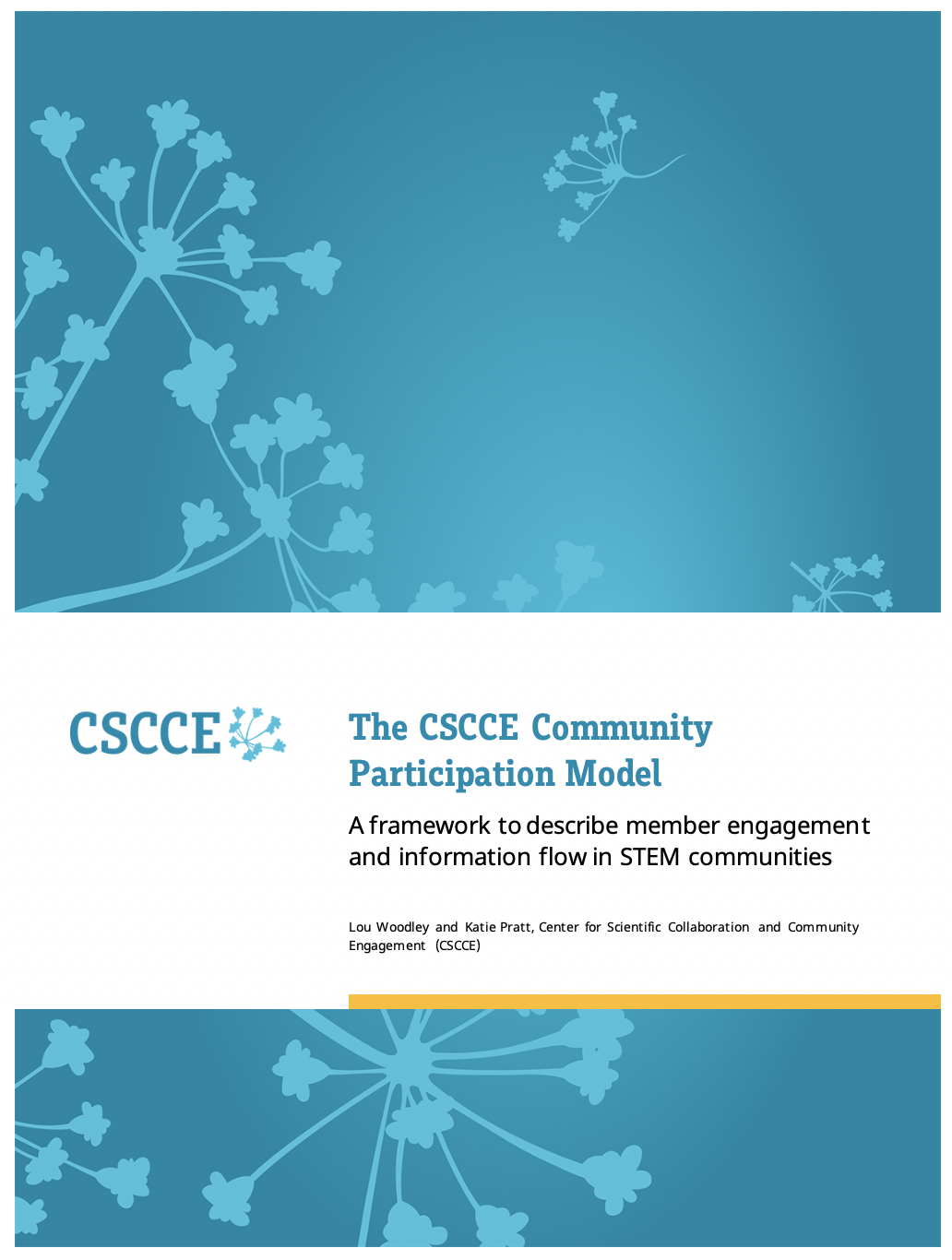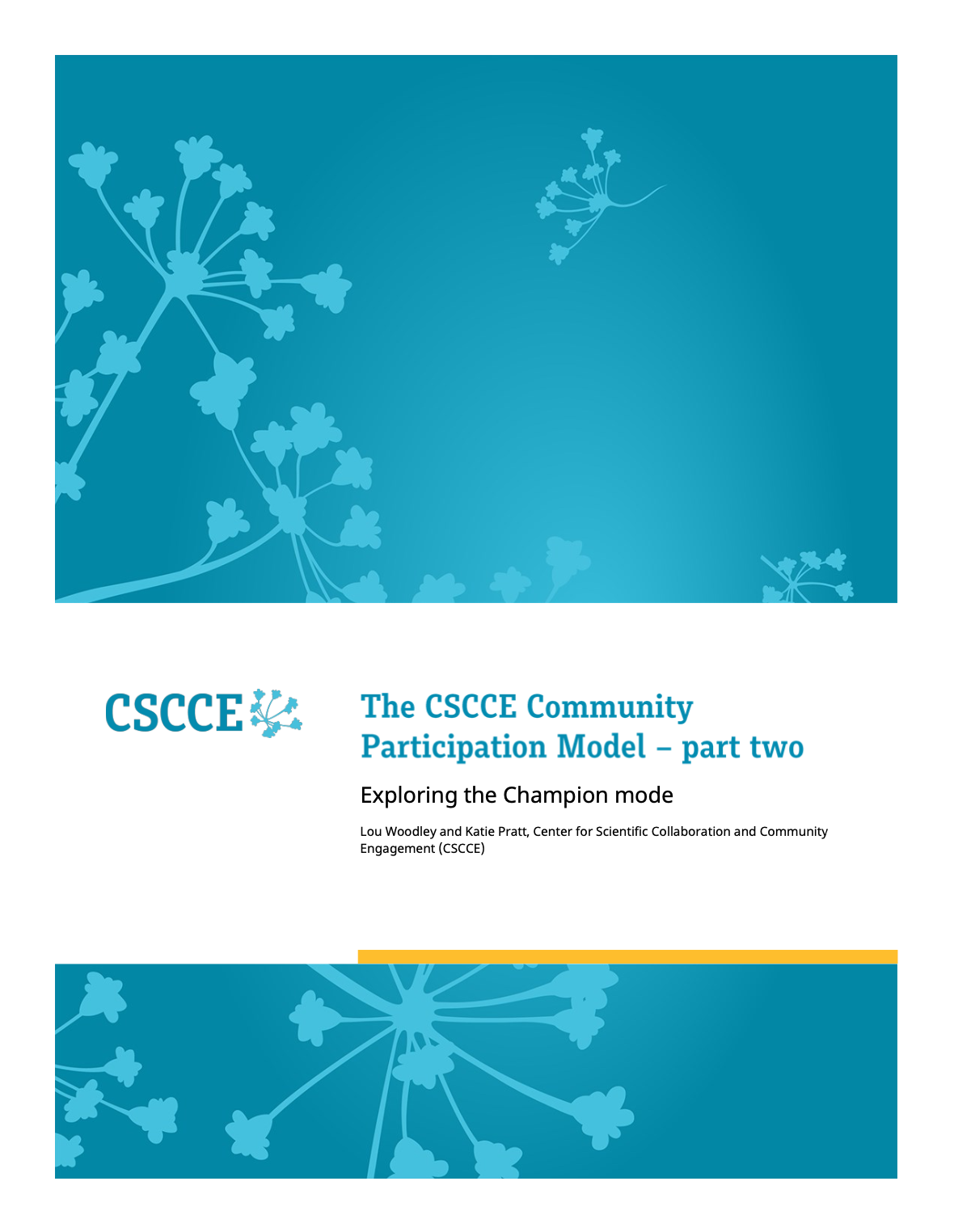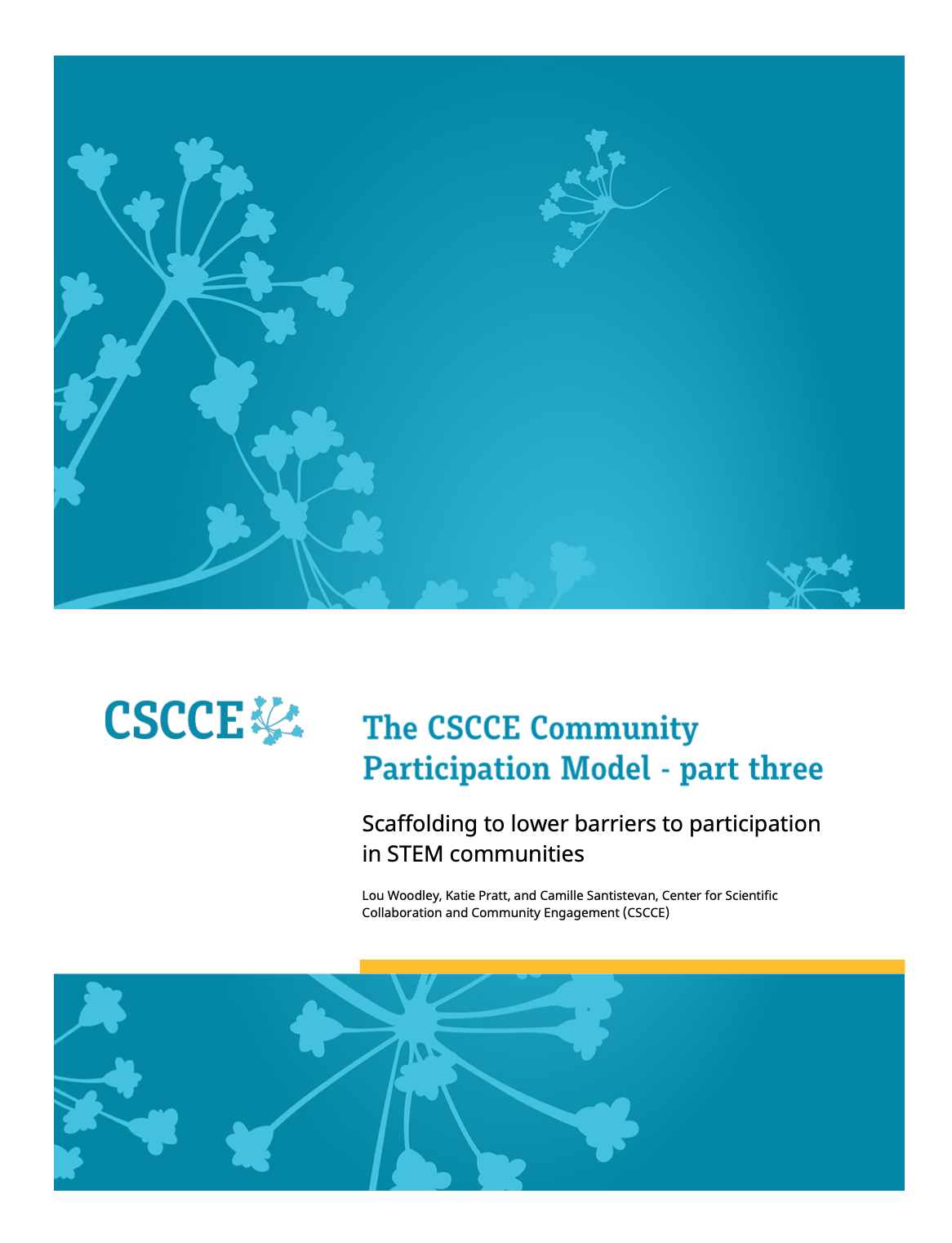On Thursday, 15 May 2025, CSCCE’s founder and director Lou Woodley joined the Community for University and Research Institution OSPOs (CURIOSS) community as the invited speaker for one of their regular “Deep Dive” sessions. CURIOSS – also seed-funded by the Alfred P. Sloan Foundation – is a community of practice for anyone working in a university or research OSPO (open source program office), and their monthly Deep Dive sessions are opportunities for the community to hear from experts in open science, open research, or academic open source.
Lou’s presentation, which was recorded and you can watch it in full below, highlighted some of CSCCE’s resources and trainings that are directly relevant to the work of open-source leaders and OSPO staff members. She did this by asking (and answering!) five questions, which we’ve briefly summarized below.
If watching Lou’s talk, or browsing this blog post, piques your interest in CSCCE’s work, please let us know by emailing info@cscce.org. We’d be happy to discuss your specific context, and whether our consultancy or training opportunities might benefit your project.
Watch the Deep Dive!
Culture change happens in communities
To frame her talk, Lou began by underscoring the importance of community-building for any project that aims to support collective behavior change; whether that’s adopting a new technology or introducing open science practices such as improved metadata use.
But communities rarely “just happen.” They require human infrastructure to build and maintain them, ensuring that they are healthy and productive. This might lead you to ask: “Where can community builders go for support and training?” and/or “where can organizations/projects looking to elevate human infrastructure find support?”
And that’s where CSCCE comes in! We exist to champion the importance of human infrastructure, especially in STEM and research contexts, and we do this in four main ways:
- Developing and publishing resources – which we make freely available for download via Zenodo and which provide core frameworks to underpin your community strategy, as well as co-created tips for different aspects of community management
- Providing professional development opportunities – ranging from 90-minute stand-alone trainings to multi-week courses, for general registrants and private cohorts; plus consultancy services to support specific projects
- Conducting small-scale research to describe and compare different community projects and community manager roles – supporting ongoing discussion about human infrastructure and community-building
- Convening a community of practice to enable practising community managers (whether that’s their formal job title or not!) to find one another and connect for peer-to-peer support and sharing of resources
For CURIOSS, Lou focused on the first two of these, resources and trainings, which she summarized using the following five questions you might ask yourself when trying to build a community.
Question 1: Who is in your community – and your broader ecosystem?
This is one of the first topics we cover in our Scientific Community Engagement Fundamentals (CEF) course, an 8-week applied training for new and existing STEM community managers, as well something we frequently consult on for our clients (e.g., through conducting member research).
Lou highlighted the value of creating a “community sketch” to get a sense of the various member groups that make up your community (or prospective community), as well as how your community members might act as “nodes” or “bridges” to other communities in your ecosystem. Given the prevalence of the terms community, network, community of communities, and ecosystem, Lou emphasized the distinctions and overlaps between these and how to take them into account when structuring community-building work.
Registration is currently open for our next cohort of CEF, which will begin on 4 September 2025 and run through the end of October (the deadline to register is 1 August 2025).
Question 2: What could your members do together that they couldn’t do alone?
This is really the “secret sauce” of community-building . As a community manager, it’s your job to figure out how to both serve the collective needs of your members and guide them towards co-creation of an outcome that addresses the community’s shared goals.
Again, CEF offers scaffolded guidance to help you identify member needs, and consider how your members might want to come together in service of their shared goals.
Question 3: How might you support multiple modes of member participation?
Here, Lou introduced the CSCCE Community Participation Model, one of the first frameworks we published as a Center. In the model, we describe four different modes of participation to explain how different community members interact with community programming, and we also highlight the existence of Community Champions – individuals who go above and beyond to maintain, grow, or evolve the community.
The model is useful in a whole range of ways, from mapping who’s in your community to creating a strategic engagement plan. And at the end of the day, it’s designed to ensure you offer varied opportunities for engagement that meet your members where they are.
We’ve written three guidebooks using the Community Participation Model, which you can download for free from our Zenodo repository:
The CSCCE Community Participation Model: A framework to describe member engagement and information flow in STEM communities
by Lou Woodley and Katie Pratt
This guidebook is intended to help you use the CSCCE Community Participation Model to inform your community member engagement strategy.
The CSCCE Community Participation Model (part two) – Exploring the Champion mode
by Lou Woodley and Katie Pratt
In part two, we focus in on the CHAMPION mode, in which emerging leaders within a community act to MAINTAIN, GROW, or EVOLVE the community.
The CSCCE Community Participation Model (part three) – Scaffolding to lower barriers to participation in STEM communities
by Lou Woodley, Katie Pratt, and Camille Santistevan
In part three, we focus on the role of scaffolding to support and grow inclusive communities in STEM.
The Community Participation Model also underpins a more recent collection of resources that discuss how to create community-engaged content. This is the focus of our Content Design (CODE) course, which we’ll be running again in 2026.
Question 4: How might you make participation easier by providing scaffolding materials?
One of the things the Community Participation Model often highlights for participants in our trainings is that they are expecting community members to know how to do things that might be new or unfamiliar to them. This is where creating scaffolding can be helpful. We define scaffolding as “the supportive information, activities, and processes that address barriers to member participation and ensure that all members can access and engage in community programming” (you can find this and other useful definitions of community-relevant terms in our growing glossary).
A key piece of scaffolding that we advise all community managers to make is a community playbook – aka a lab handbook or collaboration guide. In our Creating Community Playbooks course, we offer a framework that participants use over the course of six weeks to build the “v1” of their playbook, and discuss community-engaged ways of keeping it maintained.
You can find additional examples of scaffolding materials (many of which are available for reuse and adaptation under a CC BY licence), such as CSCCE’s welcome tipsheet and our Slack quick start guide on our scaffolding resource page.
Question 5: How might you work with community champions to scale and sustain the community?
As mentioned above, Community Champions are vital members of your community who can help maintain, grow, or evolve the community – in many ways assuring its vibrancy and longevity.
Champions can organically take on community leadership roles, and you can also proactively work to cultivate new champions by offering Champions Programs (often referred to as Ambassador programs or similar). We have worked with several community managers to support the creation of new programs, and regularly contribute to the programs themselves by offering private modules of our Mini-workshops and other trainings.
In 2022, we collaborated with several members of the CSCCE community of practice to consolidate our knowledge and theirs into a series of nine tip sheets that signpost various phases of a champions program, from inception to evaluation. You can view them all, plus some additional related resources, on the champions programs page of our website.
A new focus on open-source projects
Lou closed her presentation with a sneak peak of Birdaro, a new domain-specific project here at CSCCE that will focus on supporting leaders and decision makers in open-source projects. We’ll be sharing more about Birdaro in the next couple of weeks – including news of a multi-week training program tailored to meet the needs of open-source scaling and sustainability. Curious? Sign up for the Birdaro mailing list!


